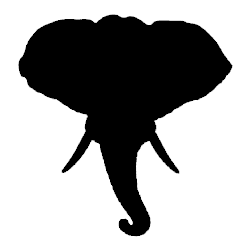MOZAMBIQUE
Mozambique’s besieged elephants continue to be threatened by poaching and the country provides a safe haven for Chinese and Vietnamese-led organised criminal syndicates involved in large-scale ivory trafficking.



Is there a need to revise the existing NIAP or develop a new one? ‘YES‘

BEST PRACTICE
New laws have been enacted removing ambiguities and increasing penalties: revisions to the Conservation Law 2014, which came into force in May 2017, have clarified that African elephants are fully protected and maximum prison terms for wildlife offences have been increased to 16 years. There have been some arrests related to ivory trafficking; however, Mozambique continues to serve as a hub for organised ivory trafficking networks.
Cooperation with South Africa and Tanzania has resulted in arrests of poachers and ivory traffickers. An MoU to underpin cooperation on wildlife trafficking with Vietnam signed in August 2017 is a significant and positive step, as is the pending MoU with China on organised crime. Mozambique and Vietnam have also agreed to develop a Mutual Legal Assistance Treaty (MLAT) to strengthen law enforcement cooperation between the countries, which is expected to be signed before the end of 2018. However, there is an urgent need to implement these commitments to improve transnational cooperation to disrupt criminal networks using Mozambique as a base from which to export illegal ivory.
A Rapid Reference Guide on wildlife crime is being developed for prosecutors, rangers and police.
KEY CONCERNS
Major source of ivory and trafficking hub
Mozambique’s significant role in the global ivory trade is evidenced by the massive decline in its elephant populations and the large number (and volume) of ivory seizures abroad that are linked to the country. Mozambique has witnessed one of the most striking recent declines in savanna elephants in the species’ range. In only five years (2009-14), the country lost 53 per cent of its elephants, according to the Great Elephant Census (GEC 2016). At Mozambique’s Niassa Game Reserve, the number of illegally killed elephants increased from 92 in 2016 to 124 in 2017. Mozambique almost never reports seizure data to ETIS but has been linked to a number of large seizures elsewhere.
EIA investigations in 2016 and 2017 confirmed that ivory traffickers connected to Asian criminal syndicates had moved operations to Mozambique, following a relative improvement in enforcement in neighbouring Tanzania. Ivory from Mozambique’s dwindling elephant populations, as well as from neighbouring countries, is being consolidated in the country and then trafficked out in shipping containers.
Rampant corruption
Mozambique is ranked as one of the most corrupt countries in Africa.. Bribes to corrupt customs officials are an essential part of the trafficking operations moving illegal ivory from Mozambique to Asia. As one of the ivory traffickers exposed by EIA’s investigations confirmed: “We’re able to move anything through Pemba. Everyone there has been bought.”
Repeated thefts from government ivory stockpiles
Of three tonnes of ivory confiscated in Maputo in April 2018, almost one-third had been taken from official stockpiles. Three policemen and a technician of the Forestry service were arrested in relation to the theft of 105 tusks from Government stockpiles in Mozambique in 2016-17 (all were later released and all investigations are still pending). Other ivory tusks from the official stockpile turned up in a large seizure in Cambodia in December 2016. Most recently (August 2018), 217 ivory pieces disappeared. The thefts from the stockpile reinforce the need for Mozambique to improve its stockpile management and to inventory and dispose of its ivory stocks when no longer required for prosecution.
No notable prosecutions and lenient penalties
Mozambique’s wildlife trade penalties have been far too lenient, a fact noted in the ETIS report to CoP17. Moreover, poachers have been convicted but not those higher up the chain. The recent increases in maximum penalties were welcome but now need to be translated into sentences that impose those higher penalties. The new legislation will be meaningless unless it is effectively enforced.
Continuing domestic market for ivory
Mozambique’s domestic ivory market is also problematic. In various coastal cities, fewer ivory carvings are displayed openly but they are still readily available in local markets on request. Ivory is sold openly in the markets of the capital Maputo, clearly aimed at Chinese visitors/consumers (traders have been observed using Chinese words for ivory). This was partly due to the previous ambiguities in the laws protecting elephants which enabled a domestic trade to persist. More recently, ANAC (National Administration for Conservation Areas), the Government agency responsible for wildlife protection, has conducted at least two operations in Maputo’s markets against the illegal domestic market.
Lack of inter-agency collaboration/communication
Systemic structural issues continue to complicate the situation in Mozambique, with a lack of cooperation and communication between national and provincial authorities, particularly around the implementation of newly-enacted laws.
RECOMMENDATIONS FOR NIAP REVISION / PRIORITY AREAS OF IMPLEMENTATION:
Mozambique should be moved from Category C to Category A.
- Develop effective anti-corruption measures and ensure they are implemented, especially at exit points
- Improve detection methods at exit points
- Take further enforcement action against the illegal domestic market for ivory carvings
- Ensure that pending ivory trade court cases, especially those involving stockpile thefts, are thoroughly investigated and prosecuted
- Improve stockpile management and inventory and dispose of ivory stocks when no longer required for prosecution
- Launch community engagement projects in natural resource management, to give communities a greater say in decision-making and a share in the proceeds of successful conservation
- Create a formal multi-agency team to combat wildlife and forest crime
- Strengthen international cooperation particularly with South Africa, Malaysia, Vietnam and China
Key indicators of NIAP progress
